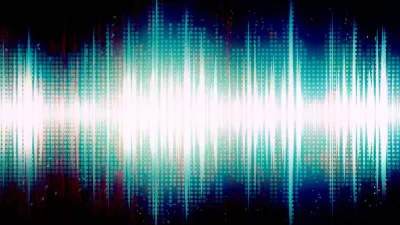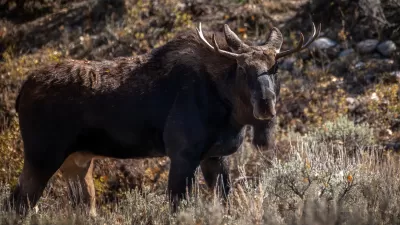With more cars on roads and planes in the sky than ever before, finding truly noise-free places with pure natural sounds has become ever more challenging.

Chris Morgan, host of the radio show The Wild, explores natural silence and the places where human-made noise is not present. He talked with Gordon Hempton, a self-described "sound tracker," and travels with Matt Mikkelson into the Hoh Rainforest in Olympic National Park in Washington to find a place untouched by noise.
"Hempton and Mikkelson have rules for what qualifies a quiet place: free of noise pollution for 15 minutes in the time period between an hour before sunrise and two hours after sunset. Hempton said only about a dozen places in the lower 48 meet that standard," says Morgan.
On the way to one of these spots, in the Hoh Rainforest, Mikkelson discusses the impact that noise has on wildlife, and Morgan notes that the hum from the park’s visitor center is still audible from half a mile away. Because the forest’s birds communicate on a variety of frequencies, such noise can interfere with an integral part of nature.
"As humans, we don’t really realize how sensitive animals are to noise pollution. And so we see that noise pollution impacts animals in some tangible and really scary ways ... We need to start realizing how noisy of a world we’ve created and really take steps to mitigate that and come to terms with that," says Mikkelson.
After they spend time at the site of a "square inch of silence" deep in the forest, Mikkelson notes that quiet and natural silence are important for humans, providing a sense of comfort and a space for reflection. “Like all of us, the silence of the wild is something perhaps we all need once in a while,” adds Morgan.
FULL STORY: The hunt to find just one square inch of silence

Alabama: Trump Terminates Settlements for Black Communities Harmed By Raw Sewage
Trump deemed the landmark civil rights agreement “illegal DEI and environmental justice policy.”

Planetizen Federal Action Tracker
A weekly monitor of how Trump’s orders and actions are impacting planners and planning in America.

The 120 Year Old Tiny Home Villages That Sheltered San Francisco’s Earthquake Refugees
More than a century ago, San Francisco mobilized to house thousands of residents displaced by the 1906 earthquake. Could their strategy offer a model for the present?

In Both Crashes and Crime, Public Transportation is Far Safer than Driving
Contrary to popular assumptions, public transportation has far lower crash and crime rates than automobile travel. For safer communities, improve and encourage transit travel.

Report: Zoning Reforms Should Complement Nashville’s Ambitious Transit Plan
Without reform, restrictive zoning codes will limit the impact of the city’s planned transit expansion and could exclude some of the residents who depend on transit the most.

Judge Orders Release of Frozen IRA, IIJA Funding
The decision is a victory for environmental groups who charged that freezing funds for critical infrastructure and disaster response programs caused “real and irreparable harm” to communities.
Urban Design for Planners 1: Software Tools
This six-course series explores essential urban design concepts using open source software and equips planners with the tools they need to participate fully in the urban design process.
Planning for Universal Design
Learn the tools for implementing Universal Design in planning regulations.
Clanton & Associates, Inc.
Jessamine County Fiscal Court
Institute for Housing and Urban Development Studies (IHS)
City of Grandview
Harvard GSD Executive Education
Toledo-Lucas County Plan Commissions
Salt Lake City
NYU Wagner Graduate School of Public Service





























